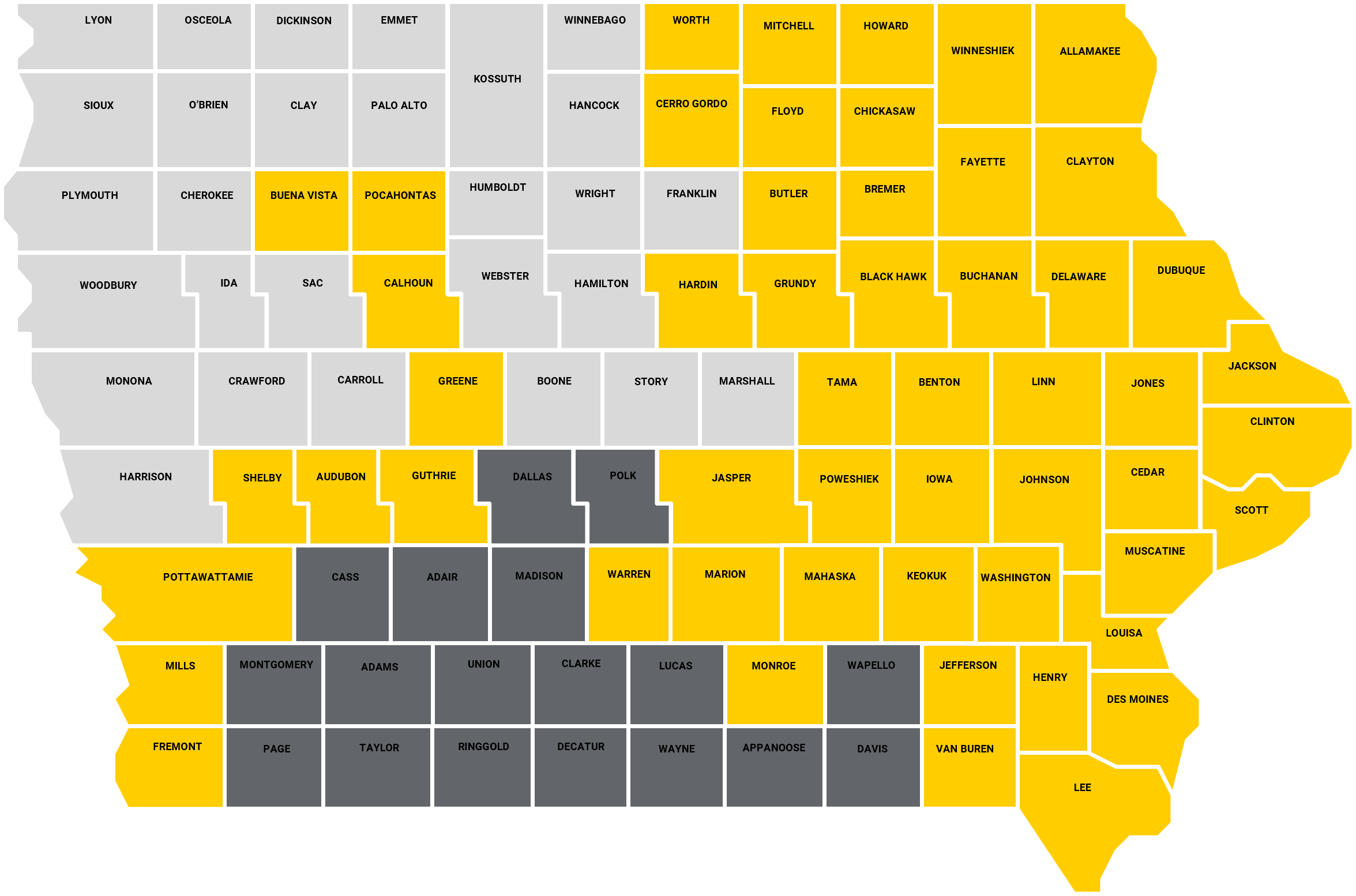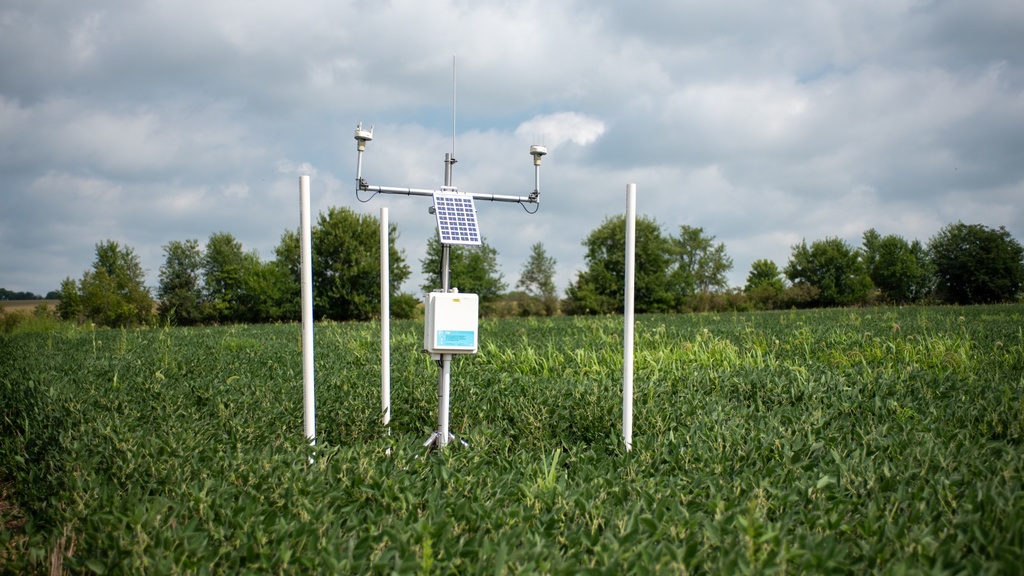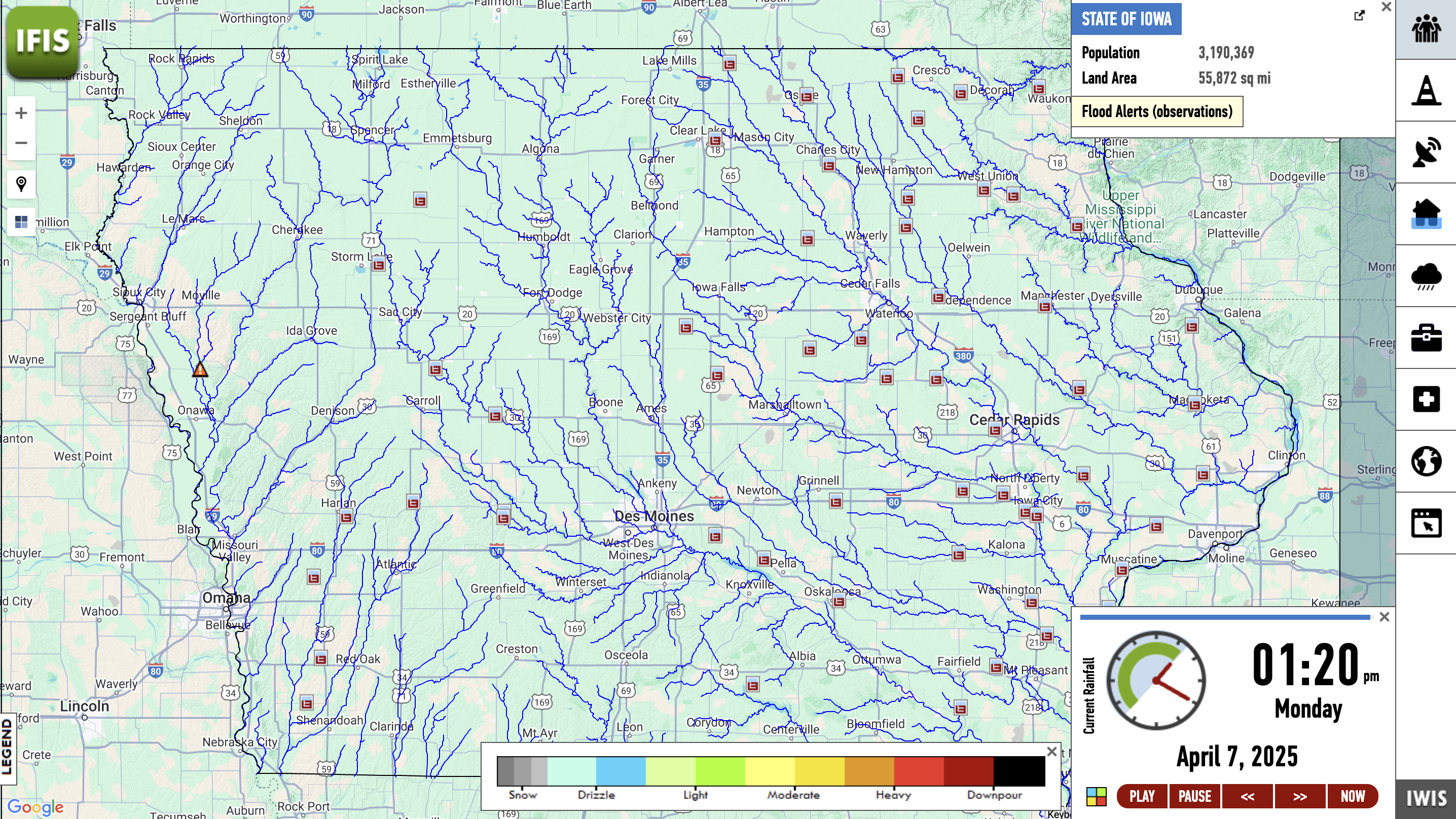
About the Network
The Iowa Flood Center's network of hydrologic weather stations (hydrostations) helps to better understand, monitor, and forecast hydrologic conditions across Iowa. The IFC is working towards a goal of deploying one hydrostation in every county throughout the state to provide robust and uniform data to support flood and drought monitoring and forecasting.
Data are collected in real-time and updated every 15 minutes to the publicly available Iowa Flood Information System (IFIS) online web platform. IFIS provides enhanced flood monitoring and data visualizations communicated through an interactive, map-based flood forecast system. Tools available through IFIS help to lessen flood impacts by providing individuals, community leaders, agencies, and decision-makers with reliable information to reduce flood impacts and protect lives, property, and critical infrastructure.
Real-Time Data
The central U.S. does not have a robust or uniform network of hydrologic weather stations to help researchers and local stakeholders monitor local hydrologic conditions at the onset of flooding in real time. The IFC's current network of more than 50 hydrostations are low cost, low maintenance, robust, and collect and transmit reliable data every few minutes (as programmed) to IFIS. Data collected informs the IFC's forecast model and provides critical publicly accessible information to landowners, researchers, and agencies.
Data from the hydrostations help researchers monitor the short and long-term impacts of climate change on water resources above and below ground. Parameters collected include:
- Wind Speed & Direction: Measures how fast the wind is blowing and the direction it is coming from, which helps understand weather patterns and their effects on the environment.
- Rainfall: Tracks the amount of rain that falls over a specific period, essential for monitoring water availability and predicting flooding or drought.
- Soil Moisture: Indicates how much water is present in the soil, critical for predicting flooding or drought conditions, and the soils ability to absorb water, and useful for plant health and agriculture operations. In the below monthly report, soil moisture is reported in volumetric water content (m3 /m3 ).
- Soil Temperature: Measures how warm or cold the soil is, an indicator of the soils ability to infiltrate water, depending if soils are frozen or thawed. Also, temperature can affect plant growth, seed germination, and microbial activity.
- Shallow Groundwater Well: Monitors the water levels in shallow underground aquifers, providing insight into groundwater availability and its connection to surface water.

Data Resources
Access historical data for any of the IFC's field monitoring equipment, including hydrostations and stream sensors.
Hydrostation Deployment Map

Figure 2: All gold-colored counties have an operating hydrostation. Through federal funding support, eastern Iowa counties in Congressional Districts 1 and 2 received 31 new hydrostations in 2024. Dark gray counties in Congressional District 3 will potentially receive funding in FY26.
Featured Project

